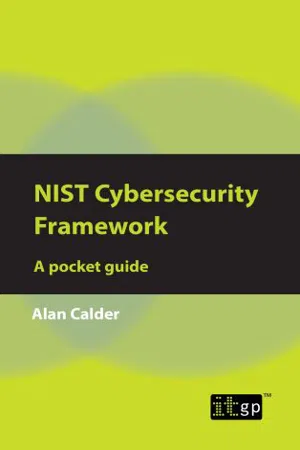
- 78 pages
- English
- ePUB (mobile friendly)
- Available on iOS & Android
About this book
This pocket guide serves as an introduction to the National Institute of Standards and Technology (NIST) and to its Cybersecurity Framework (CSF).
Now more than ever, organizations need to have a strong and flexible cybersecurity strategy in place in order to both protect themselves and be able to continue business in the event of a successful attack.
The NIST CSF is a framework for organizations to manage and mitigate cybersecurity risk based on existing standards, guidelines, and practices.
With this pocket guide you can:
- Adapt the CSF for organizations of any size to implement
- Establish an entirely new cybersecurity program, improve an existing one, or simply provide an opportunity to review your cybersecurity practices
- Break down the CSF and understand how other frameworks, such as ISO 27001 and ISO 22301, can integrate into your cybersecurity framework
By implementing the CSF in accordance with their needs, organizations can manage cybersecurity risks in the most cost-effective way possible, maximizing the return on investment in the organization's security. This pocket guide also aims to help you take a structured, sensible, risk-based approach to cybersecurity.
Frequently asked questions
- Essential is ideal for learners and professionals who enjoy exploring a wide range of subjects. Access the Essential Library with 800,000+ trusted titles and best-sellers across business, personal growth, and the humanities. Includes unlimited reading time and Standard Read Aloud voice.
- Complete: Perfect for advanced learners and researchers needing full, unrestricted access. Unlock 1.4M+ books across hundreds of subjects, including academic and specialized titles. The Complete Plan also includes advanced features like Premium Read Aloud and Research Assistant.
Please note we cannot support devices running on iOS 13 and Android 7 or earlier. Learn more about using the app.
Information
Table of contents
- Cover
- Title
- Copyright
- About the Author
- Contents
- Introduction
- Chapter 1: Aims of the Framework
- Chapter 2: Framework core
- Chapter 3: Framework profiles
- Chapter 4: Framework implementation tiers
- Chapter 5: Implementing the Framework
- Chapter 6: Alignment with other frameworks
- Appendix: Key changes from Version 1.0 to 1.1
- Glossary
- Further reading